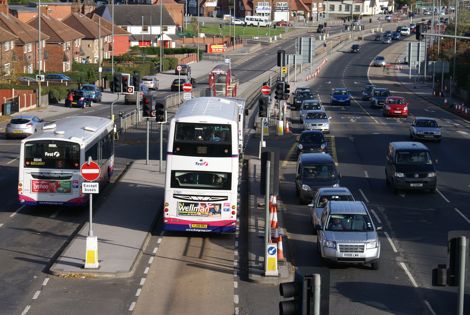swiss built h Swiss-built Hess LighTram double-articulated trolleybus
Regarding the YEP feature on 9 January one particular item does concern me and that is where the ‘Metro spokesman’ in the final column refers to ‘companies interested in building the articulated 200 passenger vehicles’. Now ftr and most other 18 metre two section artic buses are typically reputed to carry 53 seated with 60 standing passengers plus 1 wheelchair and 2 buggies. The terrible artists impressions (no photographs) in Metro literature and press releases so far show 18 metre two section buses but this comment suggests that double artic vehicles are the intention, and have been all along. No wonder they are short on detail and have not published any photographs. The Swiss built Hess LighTram (pictured) of which there are three in Lucerne is a 24.7m long double-articulated trolleybus with a capacity of around 192 passengers of which only 68 have seats. Heaven help us with two of them together down Park Row and along Boar Lane! The standard Volvo/Wright Gemini 10metre long double decker as used in Leeds (standard or hybrid) takes 89 of which all but 21 are seated whilst the 12 metre long 3 axle version will take 125 of which only 44 stand. Two of these either hybrid or fully electric would more than equal the Hess and would be separate to avoid adding to congestion and could run more frequently. Most times in the day you do not need a 200 capacity monster but you do need a regular and short wait frequency.










